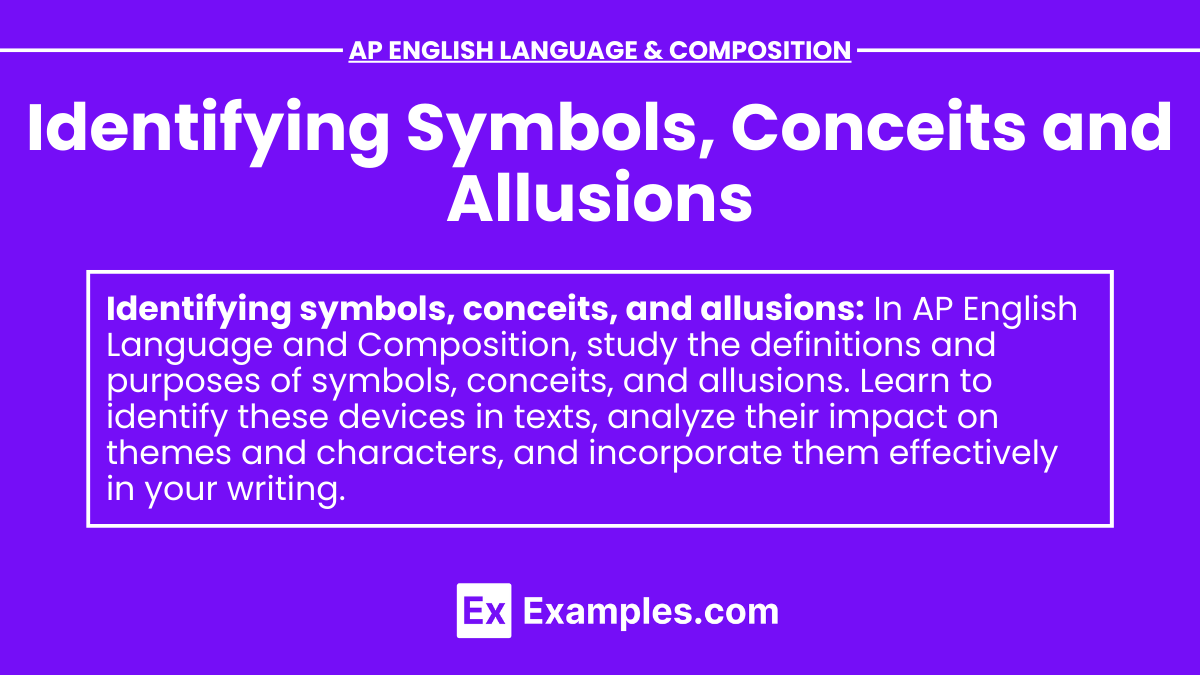In AP English Language and Composition, identifying symbols, conceits, and allusions is crucial for crafting insightful rhetorical sentences and cumulative sentences that enhance both argumentative speech and argumentative writing. These literary devices enrich texts by adding layers of meaning, enabling students to develop nuanced analyses and compelling arguments. By mastering the identification and interpretation of symbols, conceits, and allusions, students can produce well-supported, persuasive essays that demonstrate a deep understanding of literary techniques, essential for excelling in the AP exam.
Learning Objectives
The learning objectives for identifying symbols, conceits, and allusions in AP English Language and Composition include using cumulative sentences to build detailed analyses, crafting clear explanatory essays and expository essays that explore these literary devices, employing rhetorical sentences to enhance persuasive writing, developing a strong final thesis statement that incorporates analysis of these elements, and applying critical thinking to interpret and evaluate the significance of symbols, conceits, and allusions within texts.
Symbols
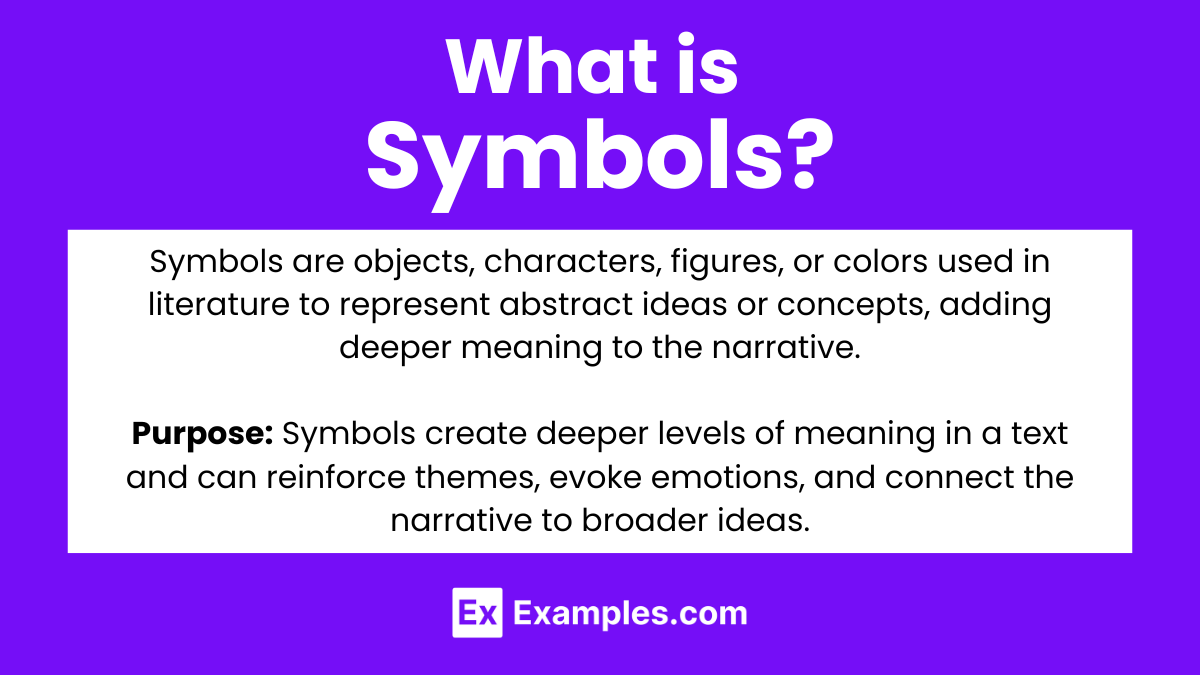
- Definition: A symbol is an object, character, figure, or color used to represent abstract ideas or concepts.
- Purpose: Symbols create deeper levels of meaning in a text and can reinforce themes, evoke emotions, and connect the narrative to broader ideas.
- Examples:
- The Green Light in “The Great Gatsby”: Represents Gatsby’s hopes and dreams for the future.
- The Conch Shell in “Lord of the Flies”: Symbolizes law, order, and political legitimacy.
- The Raven in Poe’s “The Raven”: Represents death and loss.
- How to Identify Symbols:
- Look for recurring objects or elements.
- Consider the context in which the symbol appears.
- Reflect on the larger themes of the text and how the symbol relates to them.
Conceits
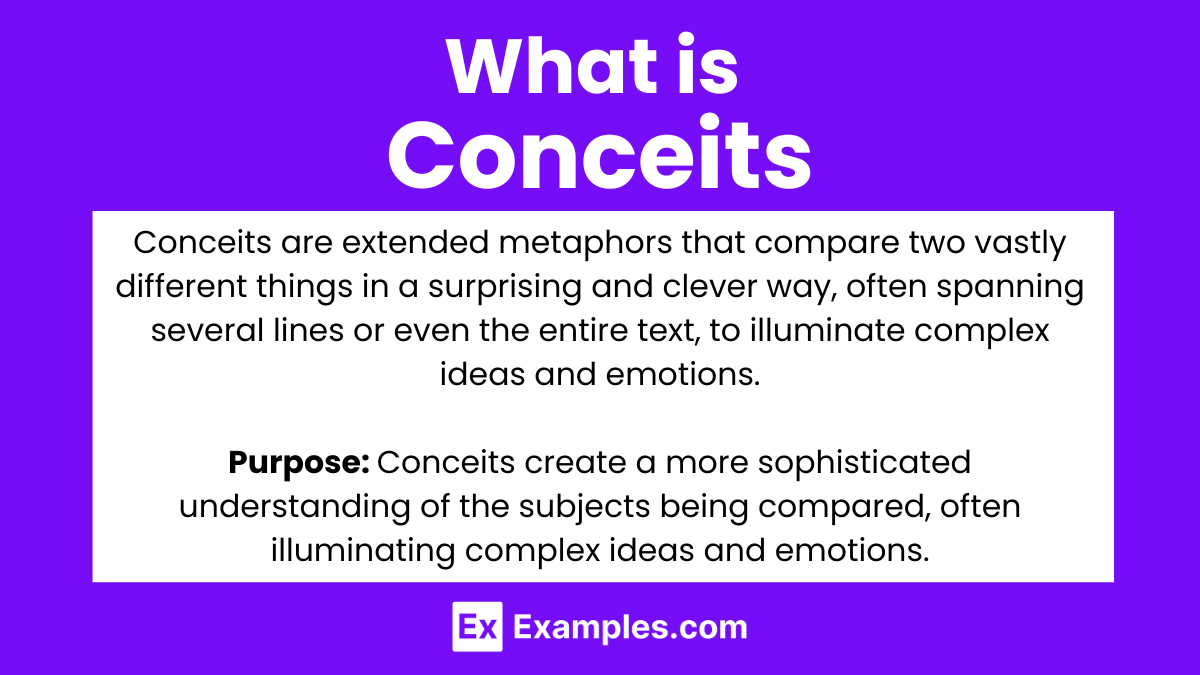
- Definition: A conceit is an extended metaphor that compares two very unlike things in a surprising and clever way.
- Purpose: Conceits create a more sophisticated understanding of the subjects being compared, often illuminating complex ideas and emotions.
- Examples:
- John Donne’s “A Valediction: Forbidding Mourning”: Compares the connection between two lovers to a drawing compass.
- Shakespeare’s “Sonnet 18”: Compares a beloved’s beauty to a summer’s day.
- Emily Dickinson’s “Hope is the thing with feathers”: Compares hope to a bird that perches in the soul.
- How to Identify Conceits:
- Look for extended metaphors that span several lines or even the entire text.
- Analyze how the two unlike things are compared and what deeper understanding this comparison brings.
Allusions
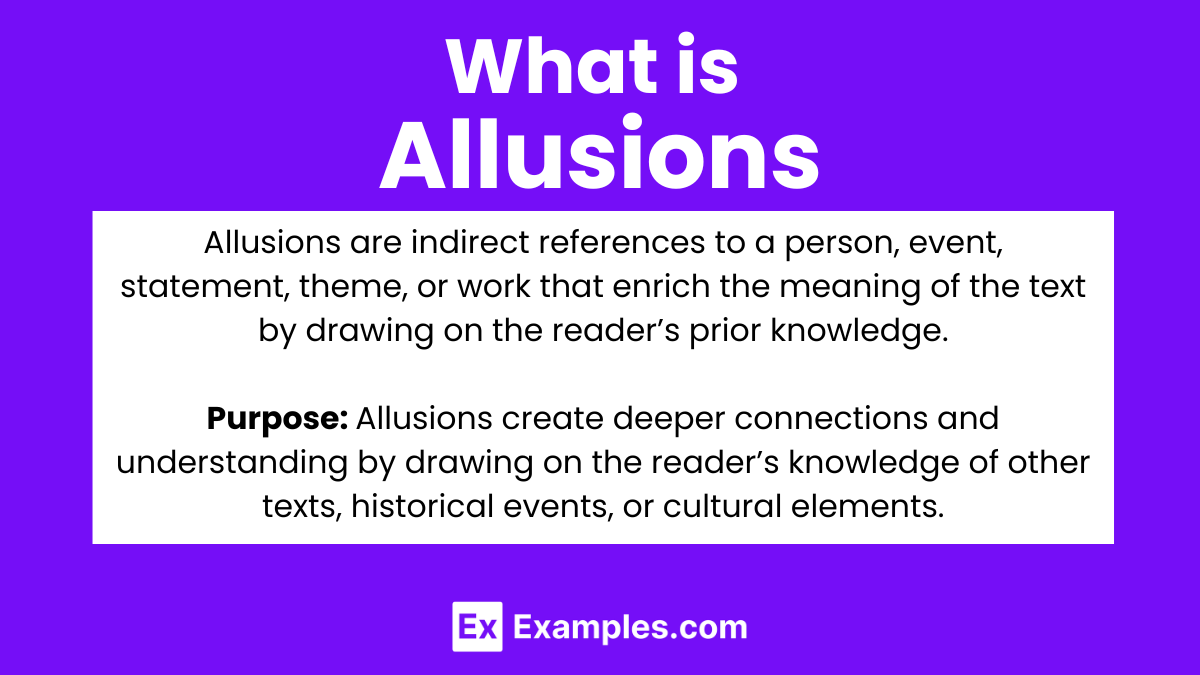
- Definition: An allusion is an indirect reference to a person, event, statement, theme, or work that enriches the meaning of the text.
- Purpose: Allusions create deeper connections and understanding by drawing on the reader’s knowledge of other texts, historical events, or cultural elements.
- Examples:
- Biblical Allusion in “Moby-Dick”: Ishmael’s name references the biblical Ishmael, suggesting themes of exile and survival.
- Mythological Allusion in “Ulysses”: James Joyce’s title and structure allude to Homer’s “Odyssey,” adding layers to the narrative.
- Historical Allusion in “To Kill a Mockingbird”: References to the Great Depression set the socio-economic context.
- How to Identify Allusions:
- Look for indirect references to well-known texts, events, or figures.
- Consider how the allusion adds to the themes or character development in the text.
- Reflect on your own knowledge and what additional meaning the allusion brings to the text.
Analyzing Symbols, Conceits, and Allusions
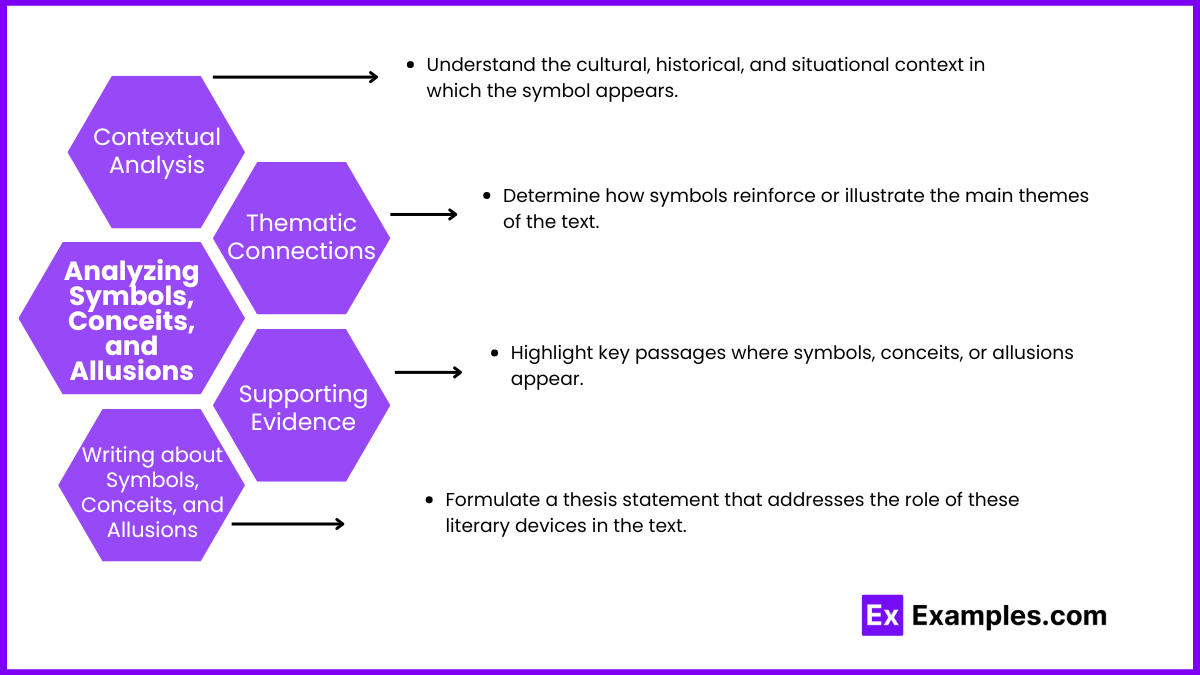
1. Contextual Analysis
- Contextualize the Symbol: Understand the cultural, historical, and situational context in which the symbol appears.
- Example: The conch shell in “Lord of the Flies” gains its symbolic meaning from its context as a tool for maintaining order among the boys.
- Contextualize the Conceit: Analyze how the extended metaphor functions within the broader context of the text.
- Example: In Donne’s “A Valediction: Forbidding Mourning,” the compass conceit reflects the steadfast and unbreakable bond between the lovers, even when they are apart.
- Contextualize the Allusion: Identify the source of the allusion and its relevance to the text.
- Example: In “The Waste Land” by T.S. Eliot, allusions to various literary works and myths deepen the poem’s exploration of cultural decay and renewal.
2. Thematic Connections
- Connect Symbols to Themes: Determine how symbols reinforce or illustrate the main themes of the text.
- Example: In “The Great Gatsby,” the green light symbolizes the American Dream and the unattainable nature of Gatsby’s desires.
- Connect Conceits to Themes: Examine how conceits develop complex themes and ideas.
- Example: The compass conceit in Donne’s poem illustrates the theme of enduring love despite physical separation.
- Connect Allusions to Themes: Analyze how allusions add depth to the text’s themes.
- Example: The biblical allusions in “Moby-Dick” enhance themes of fate, destiny, and the struggle against the divine.
3. Supporting Evidence
- Identify Passages: Highlight key passages where symbols, conceits, or allusions appear.
- Provide Analysis: Explain how these devices contribute to the overall meaning of the text.
- Example: Discuss how the recurring image of the green light in “The Great Gatsby” appears in different contexts and how each instance adds to its symbolic meaning.
4. Writing about Symbols, Conceits, and Allusions
- Develop a Thesis: Formulate a thesis statement that addresses the role of these literary devices in the text.
- Integrate Evidence: Use quotations and detailed analysis to support your thesis.
- Example Thesis: “In ‘The Great Gatsby,’ Fitzgerald uses the green light as a symbol of Gatsby’s unattainable dreams, illustrating the broader theme of the elusive American Dream.”
- Cumulative Sentences: Use cumulative sentences to build detailed analysis.
- Example: “The green light at the end of Daisy’s dock, constantly visible but never reachable, symbolizes Gatsby’s ceaseless pursuit of a dream that remains just out of reach, mirroring the larger theme of the unattainable American Dream.”
- Rhetorical Sentences: Employ rhetorical sentences to enhance persuasiveness.
- Example: “How does Fitzgerald convey the futility of Gatsby’s aspirations? Through the ever-present, yet perpetually distant green light.”

